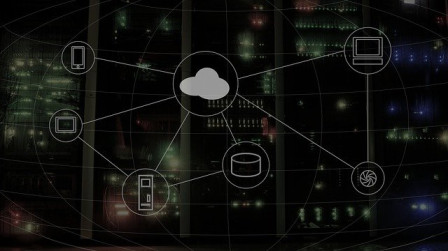The technique of preventing and defending both hardware and software technologies against unauthorised access to and integrity of your network and data is known as network security.
A network administrator or system administrator is responsible for implementing the security policy, network software, and hardware required to safeguard a network and the resources accessed through it from unauthorised access, exploitation, modification, misuse, malfunction, and destruction.
The first layer of network security is enforced by a username and password system that restricts access to only authenticated users with specific permissions. The configured firewall enforces network policies, or accessible user services, when a user is authenticated and permitted specified system access.
Types of Network Security
A network security system has numerous components that work together to improve your security posture. Now let’s look at some of the various methods for securing your network.
- Firewalls – Firewalls create a barrier between your trusted internal network and untrustworthy external networks like the Internet. They accept or prohibit traffic based on a set of rules. A firewall might be hardware, software, or a combination of the two.
- Anti-malware — Viruses, worms, and trojans aim to spread over a network by definition, and can remain dormant on infected workstations for days or weeks.
Your security effort should focus on preventing initial infection as well as removing malware that has already infiltrated your network. - Intrusion Detection Systems (IDS) are network appliances that monitor harmful activity, log information about it, take action to stop it, and then report it.
- Controlling access to your network – You should be able to prevent unauthorised people and devices from connecting to it.
Users who have been granted network access should only be allowed to access the resources that they have been granted access to. - Network segmentation — Software-defined segmentation categorises network traffic and makes it easier to enforce security standards. The classifications should ideally be based on endpoint identity rather than IP addresses.
- Application security – Attackers frequently use insecure programmes to gain access to your network. To secure those apps, you’ll need to use hardware, software, and security procedures.
- Behavioral analytics – In order to detect anomalous network behaviour, you must first understand what constitutes normal behaviour. Behavioral analytics software detects acts that are out of the ordinary automatically.
- Preventing data loss – Humans are invariably the weakest security connection.
You must adopt tools and practises to ensure that employees do not send sensitive data beyond the network, either intentionally or inadvertently. - Email security – The number one attack vector for a security compromise is email gateways. To trick consumers and send them to sites hosting malware, attackers employ personal information and social engineering approaches to create complex phishing operations.
- Virtual Private Networks (VPNs) — A VPN encrypts the connection between an endpoint and a network, which is usually over the Internet. It authenticates communication between a device and a secure network in this manner, forming a secure, encrypted “tunnel” through the open internet.
- Wireless and mobile device security – Wireless devices have all of the security problems that any other networked device has, but they can connect to almost any wireless network, anywhere, necessitating extra care.
- SIEM (security information and event management) – These products try to gather data from a range of network technologies and provide you with the information you need to identify and respond to threats.
- Wireless Network Security – Wireless networks are less secure than conventional networks. Mobile devices and apps are increasingly being targeted by cybercriminals. As a result, you must manage which devices have access to your network.
- Web security– A web security solution will restrict your employees’ access to the internet, limit web-based dangers, and prevent them from visiting hazardous websites. It will safeguard your web gateway, whether it is on-premises or in the cloud. The procedures you take to defend your own website are frequently referred to as “web security.”
Aspects of Network Security
1. Privacy
Privacy in network security refers to the expectation of confidentiality from both the sender and the recipient. Only the intended receiver should receive the delivered message, which should be opaque to other users.
Because eavesdroppers can intercept messages, only the sender and recipient should be able to understand them. As a result, encrypting the message is required to ensure that it is not intercepted. To achieve safe communication, this element of confidentiality is frequently used.
2. Message Integrity
The term “data integrity” refers to the need that data arrive to the recipient in the same condition as it was delivered. There must be no alterations to the data content in transit, whether malicious or accidental. Data integrity is becoming increasingly important as more and more monetary transactions are conducted over the internet. For secure communication, data integrity must be maintained.
3. End-point authentication
Does authentication mean that the receiver is sure of the sender?s identity, i.e., no imposter has sent the message.
4. Non-Repudiation
Non-repudiation requires the receiver to be able to demonstrate that the communication received came from a certain sender. The sender must not dispute that he or she sent a communication.
The receiver is responsible for establishing his or her identity. For instance, if a consumer requests that money be transferred from one account to another, the bank must have documentation that the customer requested the transaction.
How Does Network Security Work
When it comes to network security in a business, there are numerous layers to consider. Attacks can occur at any layer of the network security layers model, so your network security hardware, software, and rules must be built to cover all of them.
There are usually three types of controls: physical, technical, and administrative. The main methods of network security and how each control works are described briefly below.
Physical Network Security
Unauthorized personnel gaining physical access to network components such as routers, cabling cabinets, and so on is prevented by physical security mechanisms. In any organisation, controlled access, such as locks, biometric authentication, and other devices, is critical.
Technical Network Security
Data that is stored on the network or that is in transit across, into, or out of the network is protected by technical security mechanisms. It is necessary to protect data and systems from unauthorised personnel as well as malicious activity by staff.
Administrative Network Security
Security rules and processes that manage user behaviour, such as how users are verified, their level of access, and how IT staff members apply changes to the infrastructure, are referred to as administrative security controls.
Benefit From Network Security
Without network security, businesses will perish. Because the risks posed by hackers, dissatisfied employees, inexperienced staff, and other threats are simply too many to be dealt with without adequate protection.
Because of the continually changing cybersecurity threat landscape, it is extremely important today. So, let’s look at some of the advantages of using a network security solution.
- Protecting Confidential Data – Network security isn’t only about controlling what comes in and out of a network; it’s also about safeguarding what’s on the inside. That is the information it holds. It can be used to avoid data security breaches.
- Computer Longevity – By defending your network from numerous security risks such as malware, DDOS assaults, hacktivism, and so on, you may extend the life of your computers. Because your machines will be in better shape if your network is safe.
- Network security provides a closed environment that is well-protected from the internet and other external security risks. In the case of private networks, this is especially true.
Network Security Devices
- Active Devices – Surplus traffic is blocked by these security devices. Examples of such equipment include firewalls, antivirus scanning devices, and content filtering devices.
- Intrusion detection appliances, for example, are passive devices that detect and report on inappropriate traffic.
- Preventative Devices – These devices scour networks for potential security issues. Devices for penetration testing and vulnerability assessment, for example.
- UTM (Unified Threat Management) — These devices are all-in-one security solutions. Firewalls, content screening, and web caching are just a few examples.






